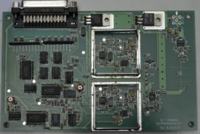neazoi
Advanced Member level 6
Is there any oscillator configuration where two independed oscillators can resonate with the same single crystal, but one of them is allowed to be offset by say 30Hz?
This way, if the frequency of the first oscillator changes by say 10Hz, the frequency of the second will change by the same ammount, i.e their difference will be always the same, if fed to a mixer.
Is that even possible with a syngle crystal or other weird means?
What I try to achieve, is to get the same difference out of a mixer, no matter of temperature changes etc, without using an oven.
This could be done by feeding the same oscillator to the RF and LO ports of a mixer, but then the difference would be zero, not 30Hz or so.
A possible way I am thinking is to feed the LO with an oscillator and then feed the RF with the same oscillator, but through a divider. This could produce a difference that would not change I think, but certainly not 30Hz.
This way, if the frequency of the first oscillator changes by say 10Hz, the frequency of the second will change by the same ammount, i.e their difference will be always the same, if fed to a mixer.
Is that even possible with a syngle crystal or other weird means?
What I try to achieve, is to get the same difference out of a mixer, no matter of temperature changes etc, without using an oven.
This could be done by feeding the same oscillator to the RF and LO ports of a mixer, but then the difference would be zero, not 30Hz or so.
A possible way I am thinking is to feed the LO with an oscillator and then feed the RF with the same oscillator, but through a divider. This could produce a difference that would not change I think, but certainly not 30Hz.
